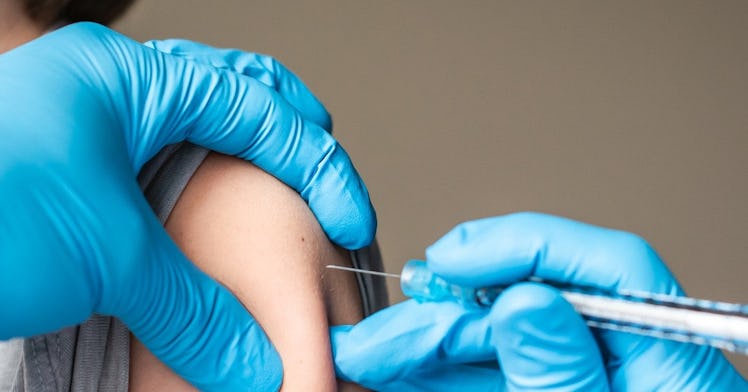Everything Parents Need To Know About The Chickenpox Vaccine
From its place in the history of mass vaccination to side effects and more, this is everything parents need to know.

For proof of the power of widespread vaccination, you don’t have to look much further than the history of chickenpox in the United States. Though the actual mortality rate of chickenpox — or varicella, as it’s more formally known — before the introduction of the vaccine in 1995 was lower than that of other well-known infectious diseases, the itchy red spots it causes have long been famous for being extraordinarily contagious. For decades, a chickenpox infection was practically a childhood rite of passage: The Centers for Disease Control and Prevention (CDC) counted more than four million cases each year before the vaccine, first developed in the 1960s and ’70s, was implemented. Less than 350,000 chickenpox cases are now recorded per year in the U.S.
How Effective Is the Chickenpox Vaccine?
The recommended two doses of the chickenpox vaccine reduce your child’s likelihood of contracting the disease by more than 90 percent, creating an important safeguard for your child and for you, given that adults are more likely than children to develop severe symptoms. Vaccinated people who do come down with the chickenpox usually have a much milder course of illness.
In the past, more than 100,000 people per year — mostly children — were hospitalized for complications from the chickenpox, such as bacterial infections and pneumonia. The vaccine has dropped that number by 84 percent to fewer than 1,700 hospitalizations annually, and deaths have taken a 90 percent nosedive into the teens.
Today, chickenpox clusters primarily only occur among groups of unvaccinated children, and studies have shown that a whopping 90 percent of unvaccinated people will catch chickenpox if exposed.
When Do Babies Get the Chickenpox Vaccine?
The vaccine’s proven success has made it a core part of the CDC’s recommended vaccination schedule for infants and toddlers. And it’s the safest way to guarantee the chickenpox immunity required by schools in more than 40 states.
Children should receive their first dose of the chickenpox vaccine within a few months after their first birthday, and their second dose between the ages of 4 and 6, according to the CDC. The vaccine is also recommended for adults who were not vaccinated or infected as children.
Chickenpox Vaccine Ingredients
Like the MMR (measles, mumps, and rubella) vaccine, the chickenpox vaccine is a type of inoculation known as a live vaccine. In a live vaccine, the main ingredient is a weakened form of the very virus the vaccine protects against, carefully altered to train the body to recognize a specific threat without actually causing sickness.
In the case of chickenpox, the varicella virus present in the vaccine has been altered via a process called cell-culture adaptation to reproduce at a rate far slower than the original virus, preventing the type of build-up that can overwhelm the immune system. It’s a level of control that can’t be found at a chickenpox party.
In addition to this specialized varicella strain, a chickenpox vaccine usually contains a stabilizing ingredient such as gelatin or sorbitol. Traces of other ingredients used in the manufacturing process — such as antibiotics to prevent contamination and simple salts to balance the vaccine’s pH — are another harmless part of any dose. These inactive ingredients can vary slightly in other countries based on the manufacturer.
Depending on your pediatrician, you may be offered the option of an MMRV vaccine for your child, a safe choice which combines the standard MMR vaccine with the varicella vaccine in one dose.
Varicella Vaccine Side Effects
As with all vaccines, side effects are normal and no cause for alarm. In fact, they’re often a great sign that the shot is stimulating the immune system and working as intended. Soreness and stiffness in the injected arm are fairly common, and a small percentage of people develop a small rash after vaccination that naturally clears up without treatment.
Chickenpox Vaccine History
For all of its success at sparing generations from those itchy, inflamed spots, the chickenpox vaccine also holds a much quieter place in history as one of a long line of scientific breakthroughs inspired by parenthood.
In 1964, as a research fellow at Baylor Medical College in Texas, Michiaki Takahashi, MD, switched his focus from measles and polio to chickenpox after watching his 3-year-old son fall ill. By 1972, Takahashi was running clinical trials of his chickenpox vaccine in Japan. Just a few years later, a small group of countries joined Japan to implement the first chickenpox vaccination programs. The United States came on board 20 years later, bringing Takahashi’s work to millions of kids in the country.